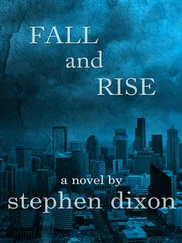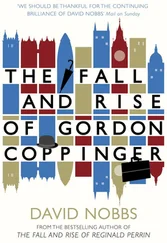Saracini didn’t say exactly when he heard the message, and he didn’t know its source among the multiple planes that used the same frequency. The words he used didn’t precisely fit any of the three accidental transmissions believed to be from Mohamed Atta from Flight 11’s cockpit.
Saracini might have been referring to Atta’s second message: “Nobody move. Everything will be okay. If you try to make any moves, you will injure yourselves and the airplane. Just stay quiet.” But the fact that Saracini heard only one message made it more likely to have been the hijacker’s third and last transmission. Otherwise, Saracini presumably would have mentioned one or both of the earlier threatening calls. The third call began at one second before 8:34 a.m.: “Nobody move, please. We are going back to the airport. Don’t try to make any stupid moves.”
Saracini didn’t say why he waited to report the message, but one logical explanation would be that he assumed that the controllers at Boston Center already knew about it because they used the same frequency. Once Flight 175 passed to New York Center and changed radio frequencies, Saracini presumably wanted to be certain that his new ground controller knew about it, too. If so, Saracini showed good foresight: Flight 175’s air traffic controller in New York Center was Dave Bottiglia, who hadn’t yet heard anything about the chaos unfolding aboard American Flight 11 as it raced toward New York City.
“Oh, okay,” Bottiglia answered. “I’ll pass that along over here.”
Under normal circumstances, an official at the FAA would share a report of a suspicious cockpit communication with airline officials, in this case the United Airlines System Operations Control center, just outside Chicago. But no one from Boston Center or New York Center did so. Bottiglia could have remedied that, but other worries suddenly demanded his full attention.
Moments after Bottiglia heard from Saracini, another New York Center flight controller walked over and showed Bottiglia a point, or “target,” on his radar screen.
“You see this target here?” the controller asked. “This is American Eleven. Boston Center thinks it’s a hijack.”
Now Dave Bottiglia had responsibility for both American Airlines Flight 11 and United Airlines Flight 175. Having been made aware that Flight 11 was racing toward Manhattan, descending rapidly with its transponder turned off and someone in the cockpit making threats, Bottiglia did his best to keep track of the American Airlines plane.
THE FIRST OUTWARD sign of trouble aboard United Airlines Flight 175 came at 8:47 a.m., about one minute after Flight 11 hit the World Trade Center’s North Tower.
Someone in the United plane’s cockpit changed the plane’s transponder code twice within a minute. Bottiglia didn’t notice because he was furiously searching for American Flight 11, which by then no longer existed.
Three minutes later, at 8:50 a.m., the pilot of a Delta Air Lines flight radioed Bottiglia to let him know about “a lot of smoke in Lower Manhattan.” The pilot said it looked as if the World Trade Center was on fire. Bottiglia acknowledged the call as he continued to search his screen for missing Flight 11.
Meanwhile, United Flight 175 remained on a southwesterly route, crossing over New Jersey and then over Pennsylvania. At 8:51 a.m., roughly four minutes after someone switched the assigned transponder code, Bottiglia noticed the change. He radioed the plane to order the pilots to return to their proper code but received no reply.
Whoever sat at the controls of Flight 175 did something else: the pilot changed altitude without approval, climbing several thousand feet, then plunging into a steep descent.
For New York Center controllers watching on radar screens in darkened rooms many miles away, pieces of a horrifying puzzle began to fall into place. First, American Flight 11 vanished as it descended toward Manhattan, and soon after, a Delta pilot reported a fire at the World Trade Center. Now United Flight 175 had changed its altitude and transponder code. The cockpit failed to respond to radio calls shortly after Captain Victor Saracini radioed his report about the suspicious message.
Flight controllers are trained to use logic and reason and not to jump to conclusions. Dave Bottiglia felt in his gut that these abnormal events were related, though he wouldn’t yet call them elements of a coordinated, nearly simultaneous hijacking plot.
Bottiglia tried to focus his attention on United Flight 175 and, if he could find it again, American Flight 11. He began to move all other flights in his sector out of the way of Flight 175’s self-assigned path, and he continued his attempts to reach the United pilots. Five times he called them, with no reply.
His voice starting to shake, Bottiglia turned to a flight control colleague in New York Center. Bottiglia asked him to watch all the other planes in his sector: “Please just take everything and don’t ask any questions.”
AT 8:52 A.M., the phone rang in Lee and Eunice Hanson’s cozy kitchen in Easton, Connecticut. Lee answered and heard the voice of their son Peter, talking quietly, his tone somber.
“Dad, we are on the airplane. It’s being hijacked,” Peter said.
Lee couldn’t process what his son was telling him. He hoped it was a joke, like the prank call Peter made years earlier to Eunice at the conservation commission.
“What are you talking about?” Lee answered. “C’mon, don’t scare everybody.”
“No, it’s true,” Peter said. He spoke in a soft, clear voice. The longer Peter spoke, the more his father heard tremors of nerves, the clearer it became that Peter wasn’t joking.
“I think they’ve taken over the cockpit… . An attendant has been stabbed … and someone else up front may have been killed. The plane is making strange moves. Call United Airlines… . Tell them it’s Flight 175, Boston to L.A.”
Lee asked about Christine and Sue, and Peter told him they were okay. All the passengers had crowded together in the rear of the plane. “It’s very tight here, Dad.”
“I’m going to hang up,” Peter said. “Call United Airlines.”
Lee repeatedly tried the airline, but the line was busy. He called the Easton Police Department, told an officer what Peter said, and asked the officer to call United and to contact the town’s police chief. Shortly after, Lee called back to make sure the police had reached the airline. This time an officer told him: “Gee, Mr. Hanson, a plane has hit the World Trade Tower. You should turn the television on.”
Lee and Eunice turned to CNN.
His son’s voice echoed in Lee’s mind. He shared what he knew with Eunice, who could barely breathe. Lee felt an urge to call Peter on his cellphone, but he stopped himself, fearing that a ringing phone might endanger everyone on board.
Distraught, in shock and disbelief, Lee and Eunice stared at the horrendous scenes on television.
CNN ANCHOR CAROL LIN broke into the cable network’s morning news report shortly before 8:49 a.m., several minutes before the Hansons tuned in. The screen filled with horrifying images of the North Tower, its top floors engulfed in fire and smoke.
“This just in,” Lin said. “You are looking at obviously a very disturbing live shot there. That is the World Trade Center, and we have unconfirmed reports this morning that a plane has crashed into one of the towers of the World Trade Center. CNN Center right now is just beginning to work on this story, obviously calling our sources and trying to figure out exactly what happened. But clearly, something relatively devastating is happening this morning there on the south end of the island of Manhattan.”
From that moment, the global audience expanded exponentially, as seemingly everyone watching rushed to a phone to tell someone else: “Turn on CNN.”
Читать дальше












